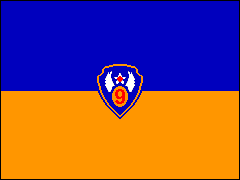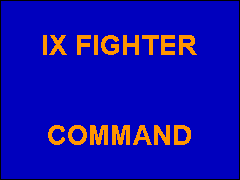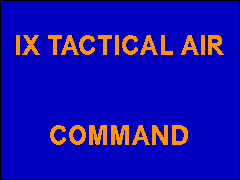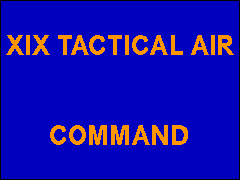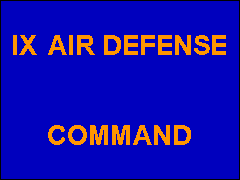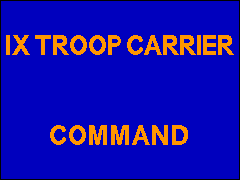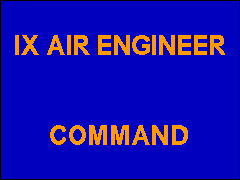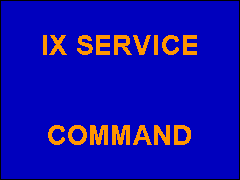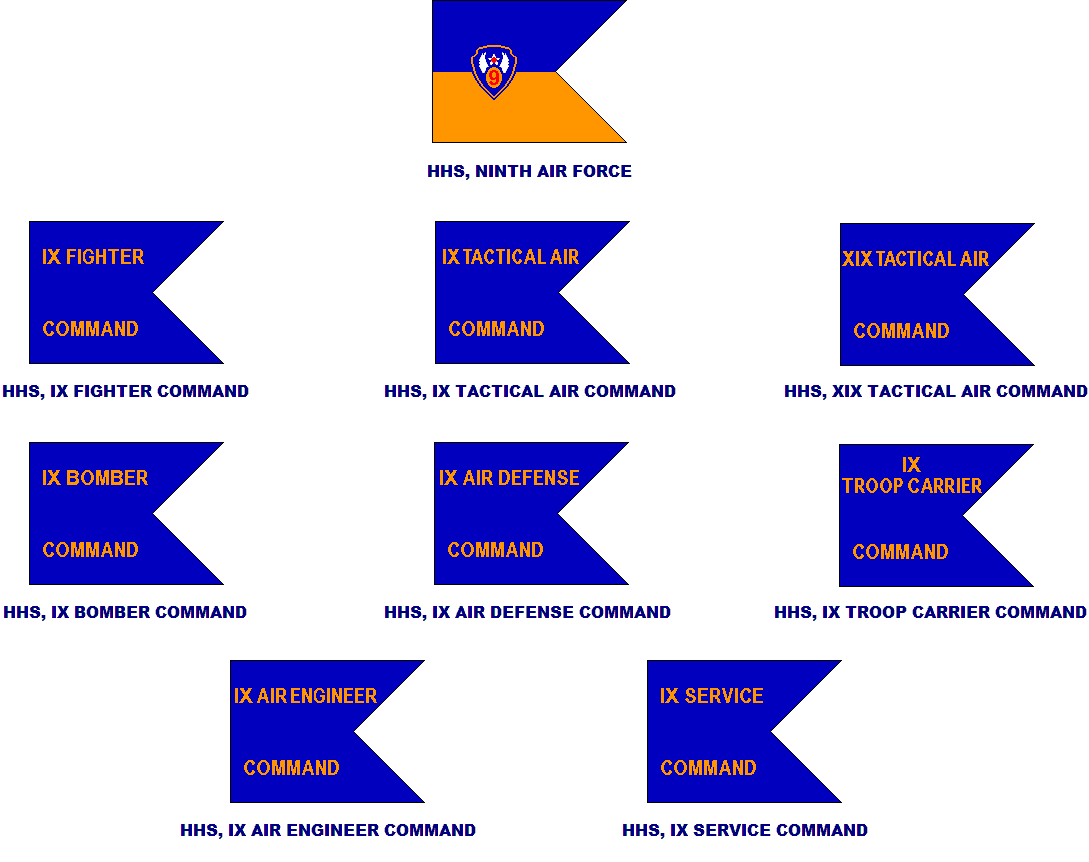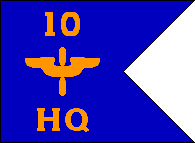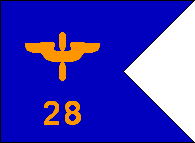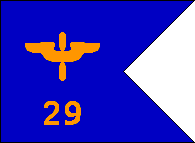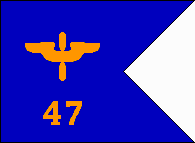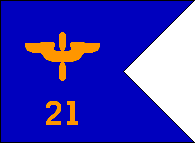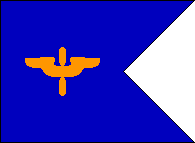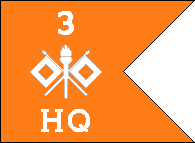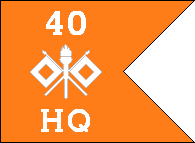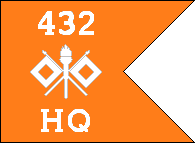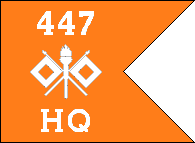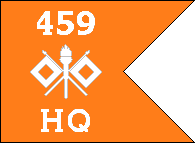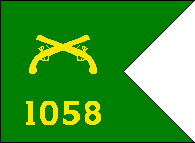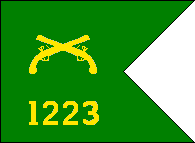UNITED STATES ARMY AIR FORCES
DISTINGUISHING FLAGS & GUIDONS • NINTH AIR FORCE • WORLD WAR II
NATIONAL STANDARD, SERVICE & DISTINGUISHING FLAGS
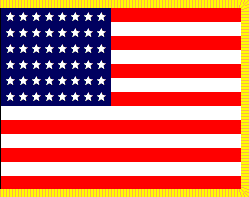
NINTH AIR FORCE
IX FIGHTER COMMAND
IX TACTICAL AIR COMMAND (Under IX Fighter Command)
XIX TACTICAL AIR COMMAND (Under IX Fighter Command)
IX BOMBER COMMAND
IX AIR DEFENSE COMMAND
IX TROOP CARRIER COMMAND
IX AIR ENGINEER COMMAND
IX SERVICE COMMAND
HEADQUARTERS ELEMENT GUIDONS
10th PHOTOGRAPHIC GROUP (RECONNAISSANCE)
28th TOW TARGET SQUADRON (B-26)
29th TOW TARGET SQUADRON (B-26)
47th LIASION SQUADRON (L-5)
SERVICE & SUPPORT UNIT GUIDONS
21st WEATHER SQUADRON
OTHER AVIATION SQUADRONS & DETACHMENTS
3rd SIGNAL BATTALION (RADIO) (AVIATION)
40TH SIGNAL BATTALION (AVIATION)
432nd SIGNAL BATTALION (HEAVY CONSTRUCTION) (AVIATION)
447th SIGNAL BATTALION (HEAVY CONSTRUCTION) (AVIATION)
459th SIGNAL BATTALION (HEAVY CONSTRUCTION) (AVIATION)
1058th MILITARY POLICE COMPANY (AVIATION)
1223rd MILITARY POLICE COMPANY (AVIATION)
